Nashville Predators general manager David Poile has a busy summer in front of him. He has to re-sign several free agents, restock the barren farm system, and potentially make a couple high-profile trades. But arguably the most important item on Poile’s to-do list is signing captain and number one defenseman Roman Josi to an extension, which can happen as soon as July 1. Given Josi’s production on his current contract and his status relative to the rest of the league, what can we expect his extension to look like?
Josi’s Current Contract
The 2019-20 season will be Josi’s last playing on his current seven-year, $28 million deal that he signed prior to the 2013-14 season. He agreed to the deal at the expiration of his entry-level contract (ELC) following a 2012-13 season in which he scored five goals and 18 points in 48 games. His contract, which may have been a slight overpay at the time of signing due to limited sample size, quickly became an underpay.
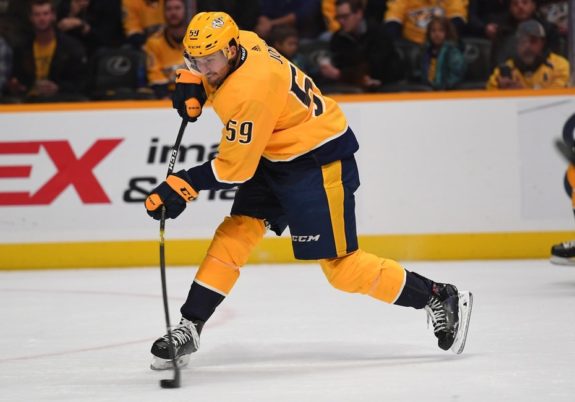
His $4 million cap hit was such an underpay that in 2018-19 he tied for the 89th-highest cap hit among defensemen and behind players that include Jonathan Ericsson, Cody Ceci, Brendan Smith, and Karl Alzner. Josi is by far a better defenseman than any of those players.
Production on Current Contract
What’s made Josi’s cap hit such an underpay is what he’s done in the six seasons since signing the deal. It just so happened that his first season on his the contract (2013-14) was his breakout campaign when he scored 13 goals and 40 points in 72 games. In total, he’s appeared in 463 regular-season games while playing on his current deal. In those games, he’s totaled 83 goals and 314 points, including 28 power play goals. He’s been a plus-50 while averaging 25:31 of ice time per game. At five-on-five, he’s sported a 51.2 percent Corsi, a 53.9 goals for percentage, and a 1.19 relative goals for percentage. So by all measures, he’s been a great defenseman, but just how good?
Relative to Other Defensemen
Beginning with the 2014-15 season, Josi’s first with 50 points, through 2018-19, he is among the game’s elite defensemen in nearly every category. His 274 points in that span tie for third with Victor Hedman and are behind Brent Burns and Erik Karlsson. His 70 goals tie for fifth with Dougie Hamilton and are behind Shea Weber, Mark Giordano, Oliver Ekman-Larsson, and Burns.
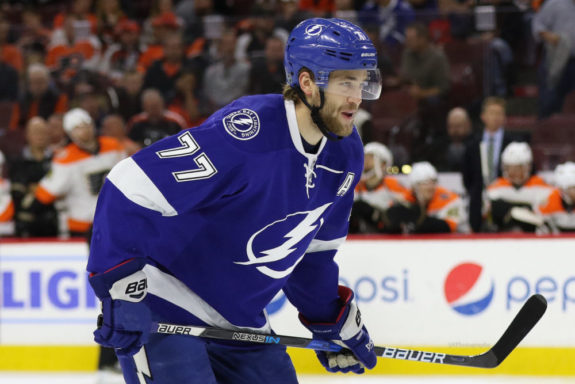
His 25 power play goals tie for fifth with Drew Doughty and follow Justin Faulk, Burns, Weber, and Ekman-Larsson. In total time on ice, Josi’s 9,913 minutes are fourth-most behind Burns, Ryan Suter, and Doughty. Finally, in point shares, his 49.9 are second to Burns’ 58.8.
Furthermore, Josi has finished top-10 in points for defensemen four times, including 2018-19. In 2014-15 he tied for fifth, in 2015-16 he was sixth, in 2016-17 he was tenth, and this season he tied for eighth. He also received Norris Trophy votes each of the past four seasons and is likely to do so again for the 2018-19 award. He has two fifth-place finishes – 2013-14 and 2015-16 – and finished eleventh in 2016-17 and seventh in 2017-18. So it’s pretty clear that Josi is among the game’s best defensemen, he just hasn’t been paid like one.
Positional Comparables
To get an understanding of just how underpaid Josi has been on his current contract, we need to look at fellow defensemen who’ve produced at levels comparable to him. If you go by Hockey-Reference’s adjusted point shares metric, his career is comparable to those of Hedman, Ekman-Larsson, Kevin Shattenkirk, and John Carlson. I’ll include each of those in the comparison, as well as Burns and Giordano.
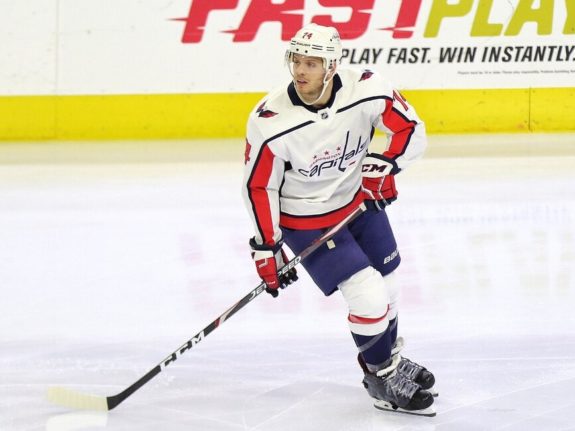
I’m intentionally leaving out some great defensemen, including Karlsson, Doughty, and Weber. Karlsson was underpaid on his past deal and his new deal reflects two Norris Trophies, Doughty signed his deal after winning his Norris, thus inflating his cap hit, and Weber signed his current 14-year deal before the last lockout. Deals of that length aren’t allowed in the current collective bargaining agree, and as a result, his contract can’t be accurately compared to those being signed in 2019. Finally, I left out any defensemen whose current deals were signed when they were restricted free agents, namely Faulk and Hamilton.
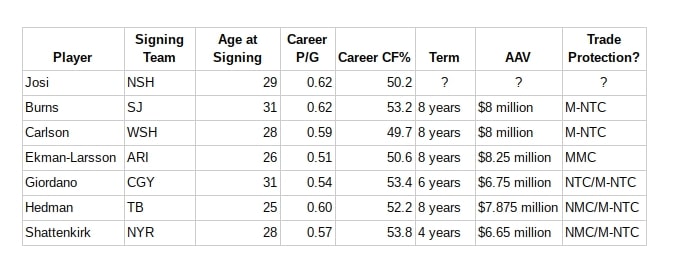
Note: M-NTC = modified no-trade clause; NMC = no-movement clause; NTC = no-trade clause
Contract information courtesy of CapFriendly, stats courtesy of Hockey-Reference
As you can see, Josi compares favorably to all of the defensemen in the above table. His career points-per-game rate (P/G) is tied with Burns for highest on the list, however, his career Corsi for percentage (CF%) is second-lowest to Carlson. A big reason for Josi’s relatively low Corsi is that he had a sub-50 CF% in each of his first three seasons. In the past three seasons, though, his Corsi has been at least 51.8 percent. He’s also had to deal with defense partner Ryan Ellis dragging down his metrics.
Finally, the last category to compare is age. Josi will be 29 when he signs, assuming he does so on July 1, and 30 when the new deals goes into effect. That puts him around the middle of the above group. He’ll be older than Hedman, Ekman-Larsson, Carlson, and Shattenkirk were, but younger than Burns and Giordano.
Speaking of term, it’s all but guaranteed Josi’s new contract will be eight years. Of the six defensemen I compared him to, only Giordano and Shattenkirk took less than max term.
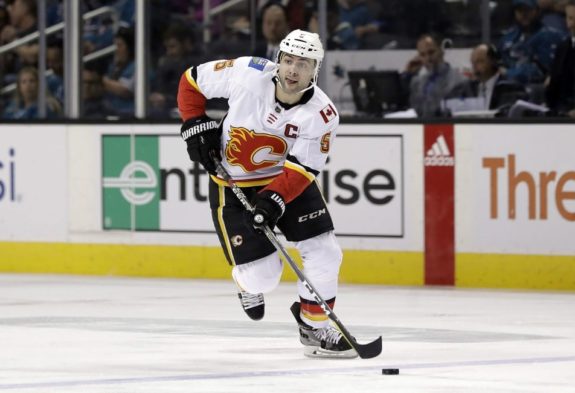
The last elements I’ll look at are cap hit and trade protection. All six players have some form of trade protection on their deals. Three have full no-movement clauses, one has a full no-trade clause, and two have modified no-trade clauses, although Burns’ modified no-trade clause has a three-team approval list, so it basically operates like a full no-trade clause.
Looking at value, all have average annual values (AAVs) between $6.65 million and $8.25 million. It’s safe to assume Josi’s value is at the upper end of this tier of players, if not beyond it. He’s never won a Norris like Burns or Hedman, but both signed their deals before winning the award. Josi’s production remains on-par with those two and he’s as important to the Predators as any defenseman is to his team.
Factors that Affect Extension
Similar to how various factors have to be taken into account when comparing Josi to other defensemen, there are several factors that go into predicting his contract extension. The first is trade protection.
Will Josi Have Trade Protection?
It’s become commonplace to include trade protection in long-term extensions handed out to veterans. They’re great for the player because they have security in knowing the team can’t move them without their approval for some or all of the contract’s duration. For teams, they can be problematic, especially if the player ages poorly as they’ll be left with a diminishing asset on a (likely) expensive contract that can’t be moved. As a result, offering players trade protection comes with a risk. However, it also comes with the benefit of lowering the contract’s AAV, as trade protection holds value.
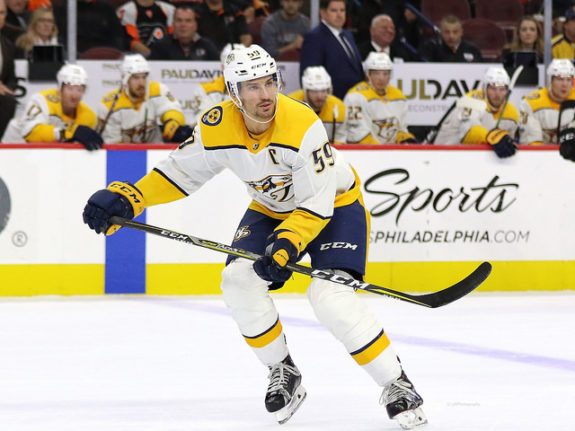
Some teams, like the Detroit Red Wings and Tampa Bay Lightning, have many players with trade protection, while others, like the Predators, have few. Poile has made a habit of not offering trade protection, and as a result the only player with protection for the 2019-20 season is Pekka Rinne in the form of a modified no-trade clause and a no-movement clause.
Poile would rather pay a higher AAV to not be handcuffed with trade protection. That’s not to say Poile won’t hand out no-trade clauses, he just chooses his spots in doing so, and I have a feeling Josi is a player he’d give one to. It all depends on what’s more important to Josi: a higher AAV without trade protection, or less money per year but not having to worry about being dealt.
Is Josi Willing to Leave Money on the Table?
Another factor is whether or not Josi is willing to leave money on the table to help the Predators surround him with talent in an effort to build a winner. Many high-profile players took less money to benefit their team during negotiations. Connor McDavid and Sidney Crosby are examples of this. Both could have demanded the maximum 20 percent of the salary cap so that the Edmonton Oilers and Pittsburgh Penguins could sign Leon Draisaitl and Evgeni Malkin, respectively.
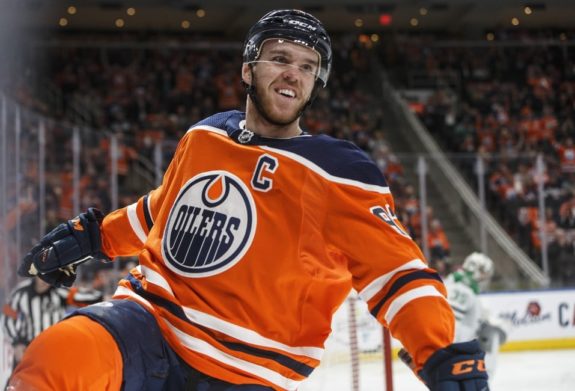
So with the Predators needing to add offense to become a serious Stanley Cup contender, how willing is Josi, the team’s captain, to take less than he’d make on the open market? Especially after being underpaid the past few seasons. There’s no real way of knowing the answer to this until either he explicitly says he’ll take less or an extension is announced. The closest we’ve gotten to this is from The Athletic’s Adam Vingan:
We’ve got a great group, great core here, and we’ve been together for a long time…You’ve got to make sure we can keep that core together. For that (to happen), you’ve got to do your part, too.
From ‘Will Roman Josi follow Ryan Ellis’ lead in contract negotiations with Predators?,’ The Athletic, 09/21/18
Josi’s quote sounds like he’s willing to leave money on the table for the Predators to build a winning roster. If that is the case, just how much he leaves on the table will be something to watch.
Tennessee Has No State Income Tax
The Predators play in Tennessee, which is one of several states that have no income tax. Other teams that play in states with no income tax are the Lightning, Florida Panthers, Dallas Stars, and Vegas Golden Knights. That means these teams use this as a bargaining chip in negotiations, telling potential signees that their bring-home pay will be larger in their city than it would be in most.

Take Josi’s current $4 million cap hit as an example. With the Predators, his bring-home pay is estimated to be $2,555,012. However, if he played for the Montreal Canadiens, the team with the highest tax rate for his salary, his bring-home pay drops to an estimated $1,892,451. That’s a substantial difference. I expect Poile and the Predators to use this to their advantage when negotiating with Josi. It’s also reflected in the prediction I make below.
Extension Prediction
Before I make my final prediction, let’s make some assumptions. One is that Josi wants an eight-year deal, and the other is that he gets a full no-trade clause.
I predict that Josi and the Predators will agree to an eight-year, $68 million extension on July 1. This contract would carry an $8.5 million cap hit and would make him the Predators’ second-highest paid player after P.K. Subban, who could be traded this offseason. That AAV would also make him the league’s fourth-highest paid defenseman after Karlsson, Doughty, and Subban
| Player | Cap Hit Percentage at Time of Signing |
| Doughty | 13.8% |
| Subban | 13% |
| Burns | 11% |
| Hedman | 10.8% |
| Ekman-Larsson | 10.4% |
| Carlson | 10.1% |
I chose that cap hit because it represents 10.2 percent of the projected $83 million salary cap for 2019-20. Here’s a look at other prominent defensemen and their cap hit percentages at time of signing.
So, compared to other defensemen, Josi’s cap hit percentage is high but not exorbitantly so. And it shouldn’t be either. Four of the five players with a higher percentage in the table above have won a Norris Trophy. This contract pays Josi well, rewards him for past production, and attempts to make up for underpaying him on his current contract. But it also doesn’t overpay him, leaves money on the table for Poile to work with, and gives him the long-term security of a max-term deal and no-trade clause. What do you think of my contract prediction?
*All stats from Hockey-Reference and Natural Stat Trick